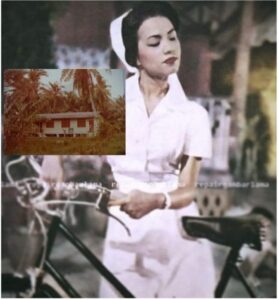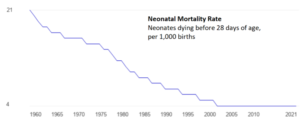
MERDEKA!
The historic moment was a start to Malaysians planning and executing a journey to bring change to our lives. And indeed, we have made great strides to make us healthier and wealthier.
When we were under colonial rule, there were efforts to provide healthcare services, these were mostly commercially driven, rather than community driven – to ensure workers are healthy enough to be economically productive.
One good measurement of community health is Maternal Mortality Rate/Ratio. In the earlier days, to be pregnant and then deliver is very hazardous – one can die during or just after delivery. Maternal Mortality Rate/Ratio is the number of women who die during pregnancy and childbirth, per 100,000 live births. In 1957, it was reported to be 540 per 100,000 live births.
Malaysia’s maternal mortality rate in the early 1960s was halved to around 300 deaths per 100,000 live births. This means that for every 100,000 women who gave birth, about 300 of them died from pregnancy-related causes. To better illustrate, you could say out of 1,000 pregnant women who delivered, 3 will die during or just after delivery!

We started with introducing The Midwives (Registration) Regulations in 1971, followed by educating traditional midwives (“Bidan Kampung”) who came forward. Then we trained young women as Trained Midwives or Bidan Terlatih, and sent them into villages and small towns to offer maternity services in protected buildings as Rumah Bidan.
These brave women should be praised for their tenacity and versatility. They move around in bicycles and a basket to attend to deliveries and after-care. With simple hygiene rules, like ensuring all instruments are sterilised (by boiling them in water), they saved the mother and child.
By increasing access to antenatal care, we had improved survivability of our mothers.

In the same stroke, we improved the survivability of the child as well. Neonatal (child of 28 days or less) Mortality decreased remarkably from 21 deaths per 1000 births in 1960. The latest value from 2021 is 4 deaths per 1000 births. For comparison, the world average in 2021 based on 187 countries is 12 deaths per 1000 births.

Source: ResearchGate

Source: Knoema
There are many other indicators of community health pointing to the progress we have made since Merdeka – Infant Mortality Rate reduction, increase in Childhood Immunity, Antenatal Visits, Numbers per Pregnancy, Age of first pregnancy and many more.
However, while we have made great progress in the area of providing care, we are struggling with lifestyle issues; we are blessed with plenty of food all-round the clock, yet living a sedentary lifestyle with less time allocated for exercise has been a norm.
We have to ACT NOW to prevent the downslide. We collectively need to plan and implement a program that includes screening and educating while planning activities to make the workforce healthier.
As a Healthcare Essential Life Partner (HELP), we firmly stand by the phrase “The first Wealth is Health”.

